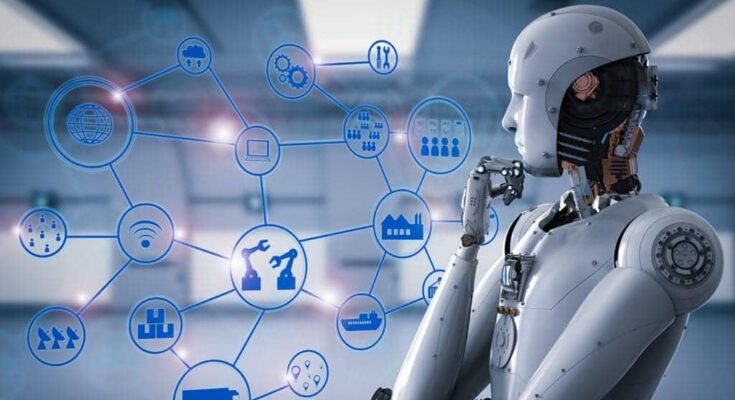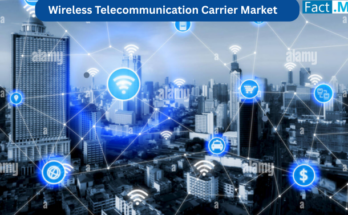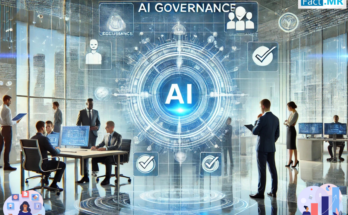The Internet of Robotic Things (IoRT) refers to the network of interconnected robots and devices that are capable of collecting and sharing data with each other and with humans over the Internet. IoRT combines the concepts of the Internet of Things (IoT) and robotics to create a system where robots can communicate, collaborate, and make decisions autonomously. In an IoRT system, robots are equipped with sensors, actuators, and communication technologies that allow them to gather information from their environment and interact with other robots and devices. This data can include information about the robot’s location, status, and the objects it interacts with. The robots can then use this data to make informed decisions and perform tasks more efficiently. The IoRT has the potential to revolutionize various industries, including manufacturing, healthcare, agriculture, and transportation. For example, in manufacturing, robots can collaborate with each other and with human workers to optimize production processes and increase productivity. In healthcare, robots can assist in surgeries, monitor patients, and provide personalized care.
In transportation, autonomous vehicles can communicate with each other to improve traffic flow and reduce accidents. However, the IoRT also presents challenges and concerns. Security and privacy are major concerns, as the interconnected nature of IoRT systems can make them vulnerable to cyber attacks. Ethical considerations also arise, such as the potential impact on jobs and the need to ensure that robots make ethical decisions when interacting with humans. Overall, the Internet of Robotic Things has the potential to transform industries and improve efficiency and productivity. However, careful consideration must be given to the ethical and security implications to ensure its responsible and beneficial implementation.
Advantages of the Internet of Robotic Things
1️⃣ Enhanced Efficiency: IoRT enables robots to communicate and collaborate with other robots, devices, and systems in real time. This connectivity allows for seamless coordination, leading to improved efficiency in various industries, such as manufacturing, logistics, and healthcare. Robots can work together, share information, and optimize processes, ultimately increasing productivity.
2️⃣ Increased Accuracy and Precision: By integrating robotics with the internet, IoRT enables robots to access and analyze vast amounts of data. This data-driven approach enhances the accuracy and precision of robotic operations, leading to improved outcomes in tasks that require high levels of precision, such as surgery, assembly lines, and quality control.
3️⃣ Remote Monitoring and Control: IoRT allows for remote monitoring and control of robotic systems. This capability is particularly beneficial in hazardous or inaccessible environments where human presence may be risky or impractical. Remote monitoring and control enable real-time adjustments, troubleshooting, and maintenance, leading to improved safety, reduced costs, and increased operational flexibility.
4️⃣ Advanced Analytics and Decision-making: With the integration of Internet of Robotic Things, robots can gather and analyze data from various sources, such as sensors, cameras, and other connected devices. This data can be used to identify patterns, trends, and anomalies, enabling advanced analytics and intelligent decision-making. Robots can adapt their behavior, optimize processes, and provide valuable insights to improve overall performance.
5️⃣ Improved Safety: IoRT can enhance safety by reducing the need for human involvement in dangerous tasks. Robots can be deployed in hazardous environments, disaster zones, or high-risk situations, minimizing the risk to human lives. Additionally, robots can be equipped with sensors and connectivity to detect and respond to potential safety hazards in real-time, further mitigating risks.
6️⃣ Scalability and Flexibility: Internet of Robotic Things offers scalability and flexibility in robotic systems. With the ability to connect and communicate, robots can work together or be easily reconfigured to adapt to changing needs or tasks. This scalability and flexibility provide cost-effective solutions that can be customized to specific requirements, promoting agility and innovation.
Future Scope of Internet of Robotic Things
The future scope of the Internet of Robotic Things (IoRT) is incredibly promising, with exciting possibilities on the horizon. Here are some potential areas where IoRT is expected to have a significant impact:
1️⃣ Smart Cities: IoRT can revolutionize urban environments by integrating robotics and connectivity. From autonomous vehicles and smart transportation systems to intelligent infrastructure management and waste management robots, IoRT can enhance efficiency, sustainability, and quality of life in cities.
2️⃣ Healthcare and Assistive Robotics: IoRT has the potential to transform healthcare delivery by enabling remote monitoring, telemedicine, and robotic-assisted surgeries. Assistive robots can support elderly care, rehabilitation, and perform routine tasks, alleviating the burden on healthcare professionals and improving patient outcomes.
3️⃣ Industrial Automation: IoRT is set to further advance industrial automation by integrating robots with real-time data and connectivity. This integration can optimize manufacturing processes, improve supply chain management, enable predictive maintenance, and enhance overall productivity and efficiency.
4️⃣ Agriculture and Farming: IoRT can revolutionize the agriculture industry by leveraging robotics and connectivity. Autonomous drones can monitor crops, robots can perform precision farming tasks, and connected sensors can optimize irrigation and fertilization, leading to increased crop yields and resource efficiency.
5️⃣ Disaster Response and Search-and-Rescue: IoRT can play a crucial role in disaster response and search-and-rescue operations. Robots equipped with sensors and connectivity can navigate hazardous environments, gather vital information, and assist in locating survivors, improving response time and minimizing risks to human rescuers.
6️⃣ Personal Robotics and Smart Homes: IoRT can bring automation and connectivity to our everyday lives. Personal robots can assist with household chores, home security, and provide personalized services. Smart homes can integrate various connected devices and robots to create a seamless and intelligent living environment.
7️⃣ Environmental Monitoring and Conservation: IoRT can contribute to environmental monitoring and conservation efforts. Robots equipped with sensors can collect data on air quality, water pollution, and wildlife habitats, enabling better understanding and proactive conservation measures.
Conclusion
Internet of Robotic Things (IoRT) represents a groundbreaking fusion of robotics, connectivity, and data that holds immense potential for various industries and our daily lives. By integrating robots with the power of the internet, IoRT enables enhanced efficiency, accuracy, and safety in a wide range of applications.
The future scope of IoRT is vast and promising. From smart cities and industrial automation to healthcare, agriculture, and disaster response, IoRT is poised to revolutionize the way we live, work, and interact with technology. It offers opportunities for increased productivity, improved resource management, and enhanced quality of life.
With IoRT, robots can communicate, collaborate, and make intelligent decisions based on real-time data analysis. This connectivity allows for seamless coordination, scalability, and adaptability, creating agile and innovative solutions. The ability to remotely monitor and control robotic systems further enhances safety and operational flexibility.
Moreover, IoRT enables advanced analytics, predictive maintenance, and personalized services. It empowers us to create smarter, more sustainable environments, conserve resources, and tackle complex challenges with efficiency and precision.
As IoRT continues to evolve, it will require careful consideration of ethical and security implications. Balancing the benefits of connectivity with privacy, data protection, and ethical considerations will be crucial to ensure the responsible and beneficial deployment of IoRT technologies.




